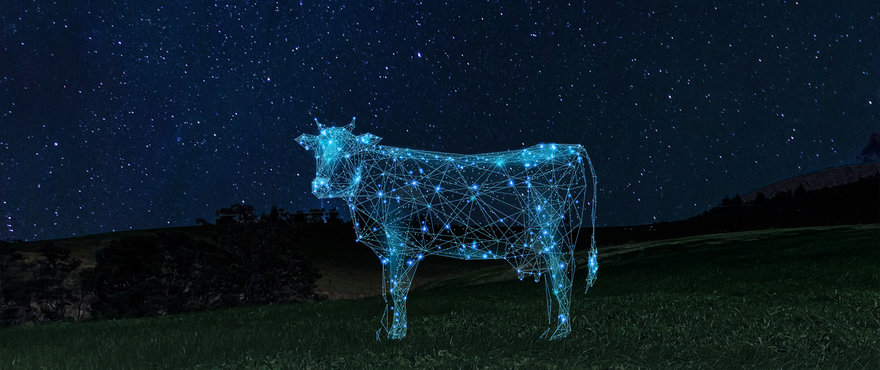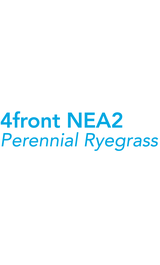Download the 4front NEA2 tech sheet
4front NEA2 Perennial Ryegrass
Lolium perenne
pH 4.8 – 8.0, min rain 700mm, most soil types
4front NEA2 tetraploid perennial ryegrass is a long-awaited replacement for the ground-breaking variety Bealey. Bealey has found great favour in high performance dairy and beef finishing operations, and now 4front NEA2 takes the potential for productivity to a higher level.
Breeding and thorough trialling of potential new varieties over the past 15years has now culminated with 4front NEA2 and will raise the bar for productivity in grazing systems targeting the highest possible performance.
Where to use 4front NEA2
- Long-term pasture for highest productivity temperate systems
- Dairy, beef cattle and sheep
- Grazing high quality pastures well into summer
- Silage and hay production
- Temperate higher rainfall zone (>700mm) or irrigation
- Tetraploid perennial component in a high-performance ryegrass/clover pasture
- Improvement and/or replacement for Bealey, Viscount, and similar types.
Benefits of sowing 4front NEA2
- Standout new variety to replace Bealey and Viscount
- Improved winter and early spring feed – when it is needed most.
- Significant winter and early spring yield improvement Bealey NEA2 and Base AR37 in 24 years’ worth of trial data. (mean of eight x three year trials, multi-year LSD (5%), CV=3.2%)
- Late – very late heading (+18 days): retains feed quality deeper into spring
- Ideal for rotational grazing and maximising yield potential
- Better late spring quality and summer growth than earlier heading types.
- Supports a high legume content through tetraploid palatability
- NEA2 endophyte:
- Excellent black beetle, Argentine stem weevil tolerance and good root aphid tolerance.
- No concern for ryegrass staggers or reduced animal productivity.
- Proven endophyte in Bealey, Impact 2, Kidman, and Rohan perennial ryegrasses.
* Eight trials in Australia over three years each
“4front NEA2 has all the benefits and features of Bealey with significantly better performance in winter and early spring. Bealey really is an exceptional grass and has been difficult to improve on. From an average seasonal yield perspective 4front offers a significant improvement over Bealey and Base in terms of dry matter production over the cooler months. Productivity differences are less significant in late spring and summer. Persistence measurements have revealed no significant differences between the three varieties.”
Damian Adcock
Research Agronomist – Intensive Temperate Systems
Mean of eight 3-year trials: Warragul and Howlong, 2016-2019, 2017-2020, 2018-2021, 2019-2022. LSD (5%). Yields with the same letter are not significantly different. CV=3.2% (523 kg/ha total yield).
Management and Agronomy
4front NEA2 perennial ryegrass is suited to temperate higher rainfall or irrigated locations with optimal growth between 10-30oC. It is very cold hardy and more heat tolerant than ryegrass. Use methods such as stale-seed bed, or a targeted herbicide program to reduce the weed-seed burden in the paddock, especially grass weeds. 4front NEA2 is best sown with soil temperatures of at least 10-12oC in early-mid autumn or in early spring as establishment below 8oC may be slow. Companion grasses should be sown at rates that complement the performance of 4front NEA2. Diploid perennial ryegrass such as Maxsyn NEA4 can be included to offer a denser sward as well as assist with preventing over-grazing. Clovers should be sown at robust rates that provide opportunity for satisfactory pasture composition. Grazing management that seeks to avoid selective grazing will enhance and retain good pasture composition.
Sowing rates:
Sole grass, drilled: 25-30 kg/ha
Over-sowing: 15-20 kg/ha
In grass mixes: 10-15 kg/ha
Sowing depth:
10 - 15 mm
4front NEA2 will require well-maintained pasture fertility levels to offer full productivity benefits. 4front NEA2 and companion species will need maintenance of phosphorus, potassium, sulphur and other elements provided to ensure continued performance and persistence. Initial and regular soil testing is recommended. Once established, 4front NEA2 pastures should be rotationally grazed to from 2½-3 leaf stage to optimise feed quality. Graze down to 3-5 cm residuals within 2-3 days and remove stock to allow rapid recovery and yield maximisation. 4front NEA2 with NEA2 endophyte has a good degree of tolerance to black beetle, root aphids, and is avoided by Argentine stem weevils.
Typical co-species
Other pasture grasses
Diploid perennial ryegrasses: Maxsyn, Rohan
Tetraploid hybrid ryegrasses: Shogun, Samurye NEA12 (cattle only).
Clovers and forage herbs
White clover, red clover, sub clover, plantain, chicory.
Seed Presentation
Treatment: Available as bare, untreated seed. Treatment available on request
Pack size: 25kg net weight.
As a ready-to-sow mix
Renovator HR (4front NEA2, Maxsyn diploid perennial ryegrass, Storm and Weka white clovers): 25-30kg/ha
Renovator Elite (4front NEA2, Shogun): 30kg/ha or 20 kg/ha if over-sowing existing pasture.
Additional Links
Perennial Extensive Pasture Guide



